Our controlled use of fire is arguably one of the most significant developments in human history. But when and where did we first start to use it? Rebecca Scott, Mark Curtis and Rob Hosfield tell us about their archaeological detective work to find the traces of camp fires from around 500,000 years ago.
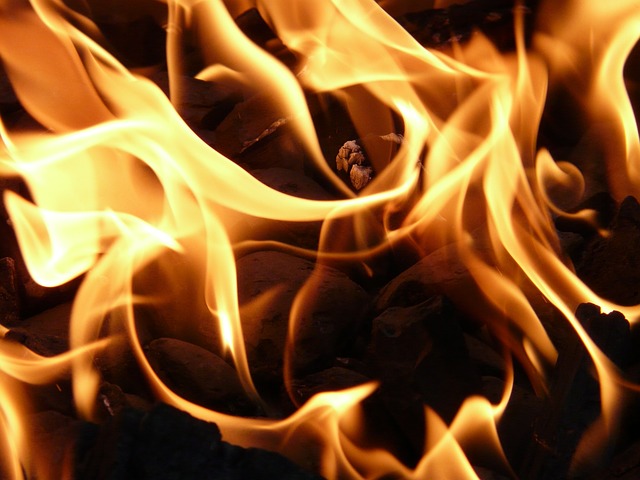
Over half a million years ago, early humans first started to move into Northern Europe. Here at the University of Reading, we’re carrying out experimental work to help us find evidence of these people’s use of fire in the archaeological record.
Ancient fire-starters
How did our ancestors actually make fire with only natural resources to hand? It’s possible they used fire-lighting techniques such as flint and pyrite and, more recently, the bow drill – although evidence for these techniques are rarely preserved in the archaeological record. These percussive and friction-based fire-making techniques requires the ability to work wood, knowledge of plants and stone, together with extensive planning and skill.
Some societies across the globe today, such as the Hadza in Tanzania, still use methods such as the bow drill, hand drill, fire plough and fire saw, and variations of them may have been used by people in prehistory. Working with such communities can improve our understanding of past fire-making techniques.
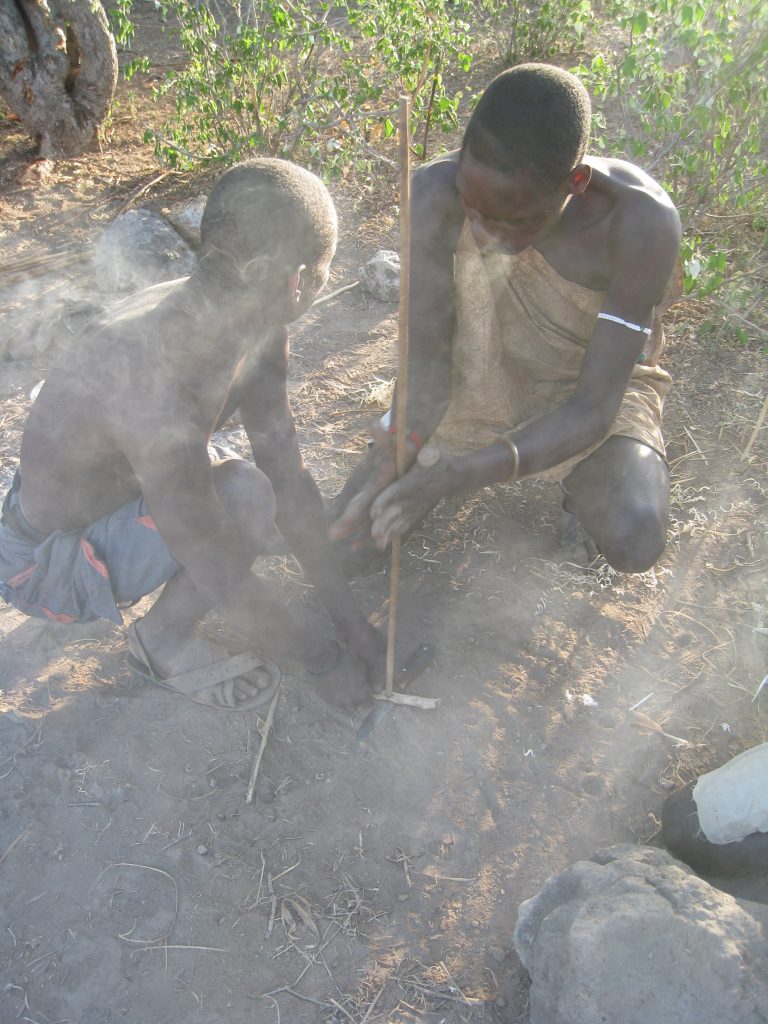
Percussive methods of fire making (banging things together to make sparks) likely started with the use of naturally occurring nodules of iron-pyrite struck against flint. This method has been made significantly easier in very recent times through the use of a high-carbon steel striker instead of iron pyrite.
As anyone who has ever tried to do it could tell you, making and kindling fire is difficult and time-consuming. It requires a great deal of perseverance and attention, and often requires social cooperation. The ease with which fire can be kindled can also be very variable depending on different weather or fuel conditions.
Archaeological detective work
Finding evidence for fire use by early humans is notoriously difficult and is often a subject of great debate. The earliest known potential evidence for fire use, although contested by some, comes from burnt bones and reddened sediment at the sites of Swartkrans in South Africa, and Koobi Fora in Kenya some 1.5 million years ago.
Outside the African continent, early fire evidence is sparse. In temperate northern Europe, there are just a handful of open-air sites with fire evidence dating to around 1 million to 300,000 years ago. But deciphering whether these were created by early humans or were naturally occurring fires can be challenging. Examples include Beeches Pit in Suffolk and Ménez Drégan in France, both of which occur towards the end of what is known as the Lower Palaeolithic period (around 400,000 years ago).
It has been suggested that even our closest ‘cousins’, the Neanderthals, were not necessarily the greatest users of fire, with the richness of the evidence for fire use before 60,000 years ago fiercely debated.
The recent re-evaluation of the supposed 300,000-year-old hearth features at the site of Schöningen in Germany has shown that the site actually contains little evidence for anthropogenic fire. It is clear that the apparent use of fire at many older sites should be considered and evaluated with caution, but did our early human ancestors really colonise North West Europe without the habitual use of fire, as suggested by researchers such as Wil Roebroeks and Paolo Villa?
Even at such well-preserved European sites as Boxgrove, dated to c. 500,000 years ago, there is no evidence for the anthropogenic use of fire – is this a true reflection of its absence? Or is this a reflection of the fragility of fire residues and the near invisibility of small, short-term controlled fires?
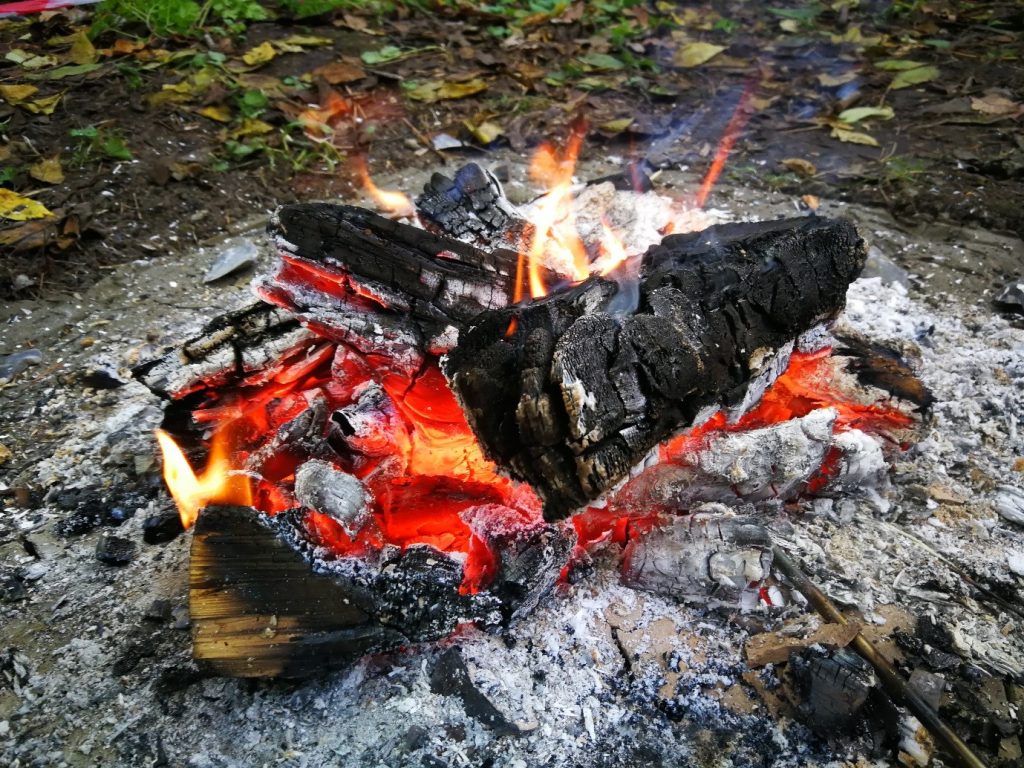
Deep human past
To help answer these questions, we are looking at the effects of short-term fires on different types of sediments to better understand how well these fire features and residues are preserved over time. Early results from Rebecca’s experimental work have shown that the traces of some past camp fires are likely to be more visible than others, depending on the underlying sediment type (despite using the same type and quantities of fuel).
The remains of hunter-gatherer’s fires might include fish or animal bones or fire-altered stones. Our experiments examine how these remains are affected by post-depositional processes such as the disturbance of soils and sediments by worms, small animals and plant growth. We also look at how the visibility of past fires may change over time, using various analytical techniques including the examination of mineral alterations due to heat from the fires.
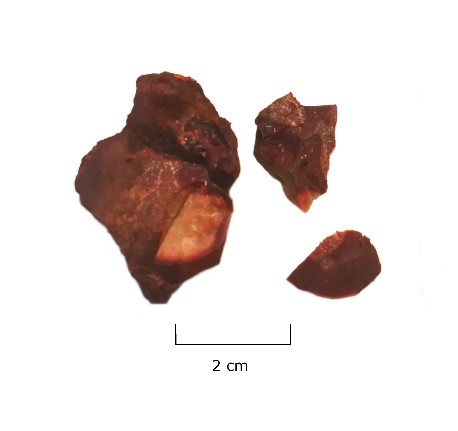
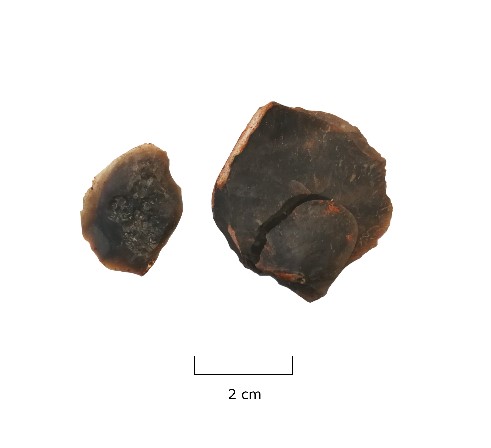
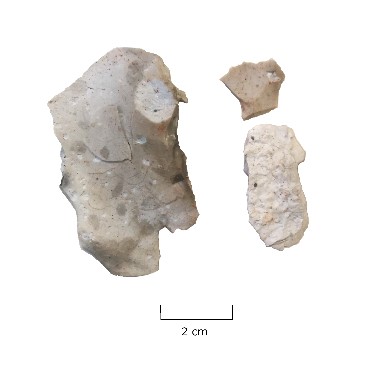
Examples of flint flakes altered by a small (c. 50 cm diameter) campfire. Note the differences in colour and texture between the flakes at the surface (Far right – white) and at depth (Far left – reddening, middle – blackening and ‘pot-lid’ fracturing.
These ongoing experiments are therefore highlighting some of the difficulties archaeologists have in finding evidence of past fire use in the earliest archaeological record, but are also shedding light on possible solutions to these challenges and helping us to better understand the development of fire use in the deep human past.
Rebecca Scott’s postgraduate research project is on the subject of fire in the Lower Palaeolithic, and whether there is ‘absence of evidence or evidence of absence’ for both.
Marc Curtis was a student in the University of Reading’s department of Archaeology, who graduated with a BA Honours in July 2019.
Dr Robert Hosfield is Associate Professor of Archaeology. His areas of interest include British and Western European Palaeolithic archaeology experimental archaeology and site formation processes.
